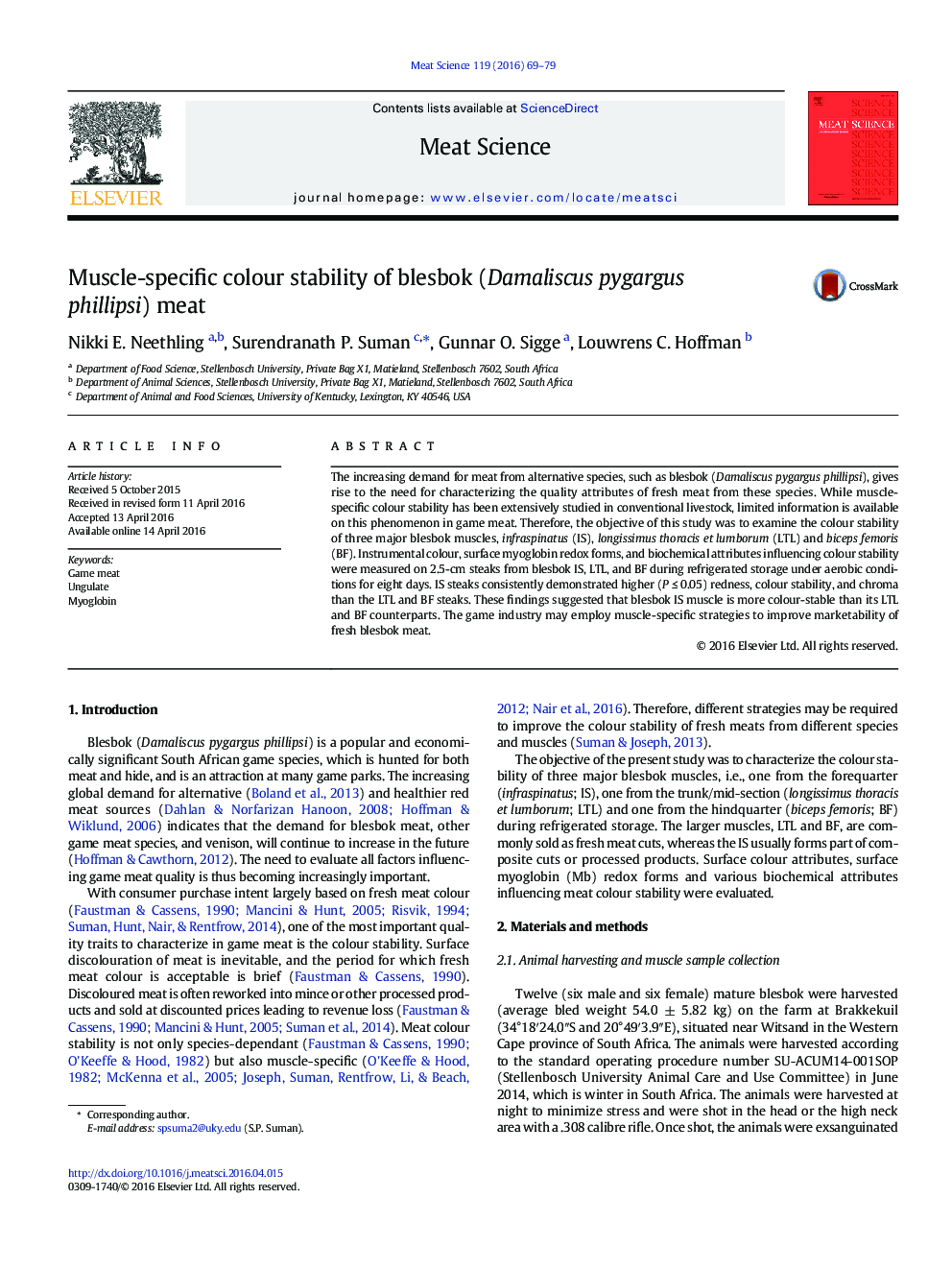| Article ID | Journal | Published Year | Pages | File Type |
|---|---|---|---|---|
| 2449368 | Meat Science | 2016 | 11 Pages |
•Blesbok (Damaliscus pygargus phillipsi) is an economically important game species.•Limited scientific information is available on colour stability of fresh game meats.•Colour and biochemical traits of three major blesbok muscles were examined.•Infraspinatus is more colour-stable than longissimus and biceps femoris.•Muscle-specific strategies may be used to improve color stability of blesbok meat.
The increasing demand for meat from alternative species, such as blesbok (Damaliscus pygargus phillipsi), gives rise to the need for characterizing the quality attributes of fresh meat from these species. While muscle-specific colour stability has been extensively studied in conventional livestock, limited information is available on this phenomenon in game meat. Therefore, the objective of this study was to examine the colour stability of three major blesbok muscles, infraspinatus (IS), longissimus thoracis et lumborum (LTL) and biceps femoris (BF). Instrumental colour, surface myoglobin redox forms, and biochemical attributes influencing colour stability were measured on 2.5-cm steaks from blesbok IS, LTL, and BF during refrigerated storage under aerobic conditions for eight days. IS steaks consistently demonstrated higher (P ≤ 0.05) redness, colour stability, and chroma than the LTL and BF steaks. These findings suggested that blesbok IS muscle is more colour-stable than its LTL and BF counterparts. The game industry may employ muscle-specific strategies to improve marketability of fresh blesbok meat.
